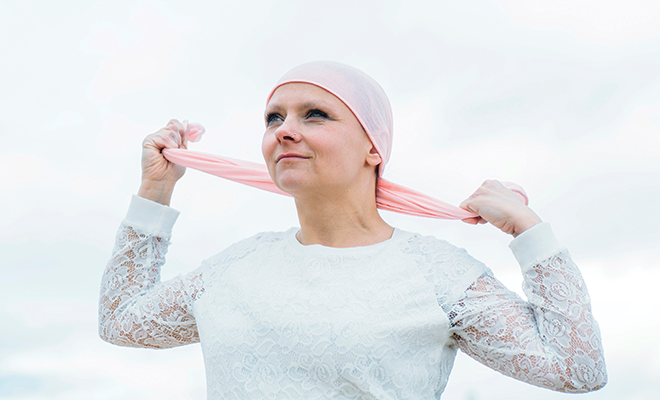
Function and Style Without Sacrifice!
What’s fashionable about that blue hospital gown when you’re recovering from cancer? It’s the most visible sign of illness and provides little dignity or modesty.
In the 1950s, Helen Cookman is credited with developing the first fashionable adaptive clothing line known as Functional Fashions. Her collection included features such as easy-to-reach pockets and hidden adaptive elements, addressing the needs of people with disabilities, particularly those with hearing loss.
In the last ten years, the functional fashion model has exploded. Global sales for 2025 are expected to be near $3 trillion, and that’s projected to increase to $9 trillion by 2033. Pioneers in the design of attractive, comfortable apparel for medical patients are not as well known as Ralph Lauren or Louise Trotter, yet their stories of innovation are compelling.
Pediatric surgeon Dr. Julie Sanchez first saw the need for adaptive clothing in 2015 after meeting a mother struggling to keep her autistic son’s G-tube secure. She realized medical devices didn’t just impact health, they changed daily life. Parents stayed up all night guarding feeding tubes, and kids avoided school or sports out of fear. Fashion designer Saba Kamaras had seen the same struggles firsthand with her niece, who had a form of terminal muscular dystrophy and a G-tube. She knew thoughtful design changes could make a huge difference. With this shared mission, Dr. Sanchez and Saba created Spoonie Threads, apparel designed for adults and children to provide comfort, confidence and real-life needs. Every piece is developed with input from the disability and chronic illness community, ensuring both function and style. Their colorful tees, hoodies and sweatshirts provide access to ports through zippers and snaps. My favorite is a long-sleeved tee in bold stripes that does not sacrifice style. The unisex chemo shirt is crafted from soft jersey fabric and features two eye-catching diagonal zippers at the shoulders, providing easy access to broviacs, central lines and port access without the need to undress. The longer sleeves offer added warmth and comfort during infusion treatments, and the zippers make dressing easier for those recovering from surgery. Plastic zippers are MRI-friendly and perfect for securing loose lines during treatment.
Allie Tate, founder of Portt, grew frustrated by the lack of modern products available for women undergoing chemotherapy while she herself was undergoing chemotherapy. She wanted products that were functional but still felt like something she would have worn pre-diagnosis and post chemotherapy. “As a sewist, I decided to stitch up a shirt for myself that looked like a regular shirt but opened on the shoulder of my port to allow for easy, comfortable access,” she told CanvasRebel in 2024. “After completing treatment, I continued to think about the garment I made and wondered if other people also had the same frustrations that I felt during chemo. As I started to share my idea with others, I found so many women expressing how much they had wished something like Portt existed when they were navigating chemo. Fast forward a couple of years and I decided to leave my job of 12 years to pursue this idea, and so Portt became a reality! Portt garments are all sewn in the U.S.A. in a Boston-based, woman-owned factory. I source super soft, breathable, sustainable fabrics and opt for minimal, recycled or recyclable packing and shipping materials. I am dedicated to ensuring Portt products are sustainable, functional and fashionable.”
Healing Threads is a labor of love and a mission of hope started by three sisters, two of whom were diagnosed with cancer in 2002 and 2003. During uncomfortable hours spent waiting in the hospital, they realized that the most visible sign of cancer or illness was the dreaded hospital gown. They proceeded to create four gown designs and two pant styles that restore dignity, modesty, style and personality to patients. The Elegant Top, a particularly stylish shirt, doubles as chemotherapy clothing and a drain management garment. It allows you to dress in the comfort of your home and then go to your medical appointments or treatments without having to change. The shirt allows for drain management immediately following surgery and can accommodate monitors or pumps as well. It’s made of soft microfiber that is nonirritating and soothing on tender skin; large interior pockets provide a discreet place for drains, monitors or pumps, keeping medical apparatus private from guests and visitors. Port accessibility is made easy with hidden “hook and loop” pull-down access panels on each side of the top and again down the middle, which allow for easy access during chemo, for porta-caths, medical exams and treatments without the need to disrobe. Plus, it’s washable!
With a Google search, you can find these and more options for fashion fused with function and more versatile than your everyday clothing!
Sources: oncologynurseadvisor.com, survivorroom.com, cognitivemarketresearch.com, spooniethreads.com, weareportt.com and canvasrebel.com.







